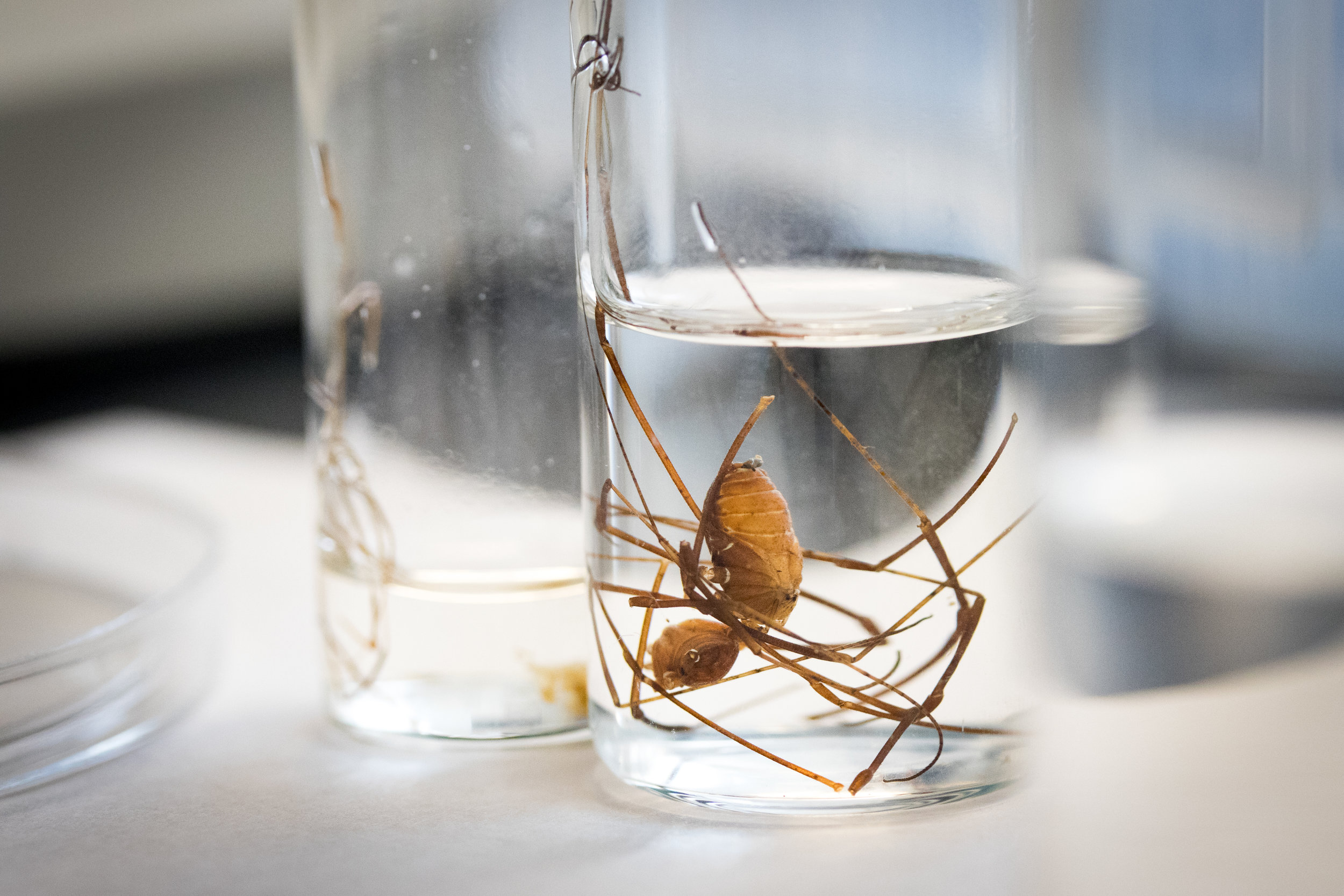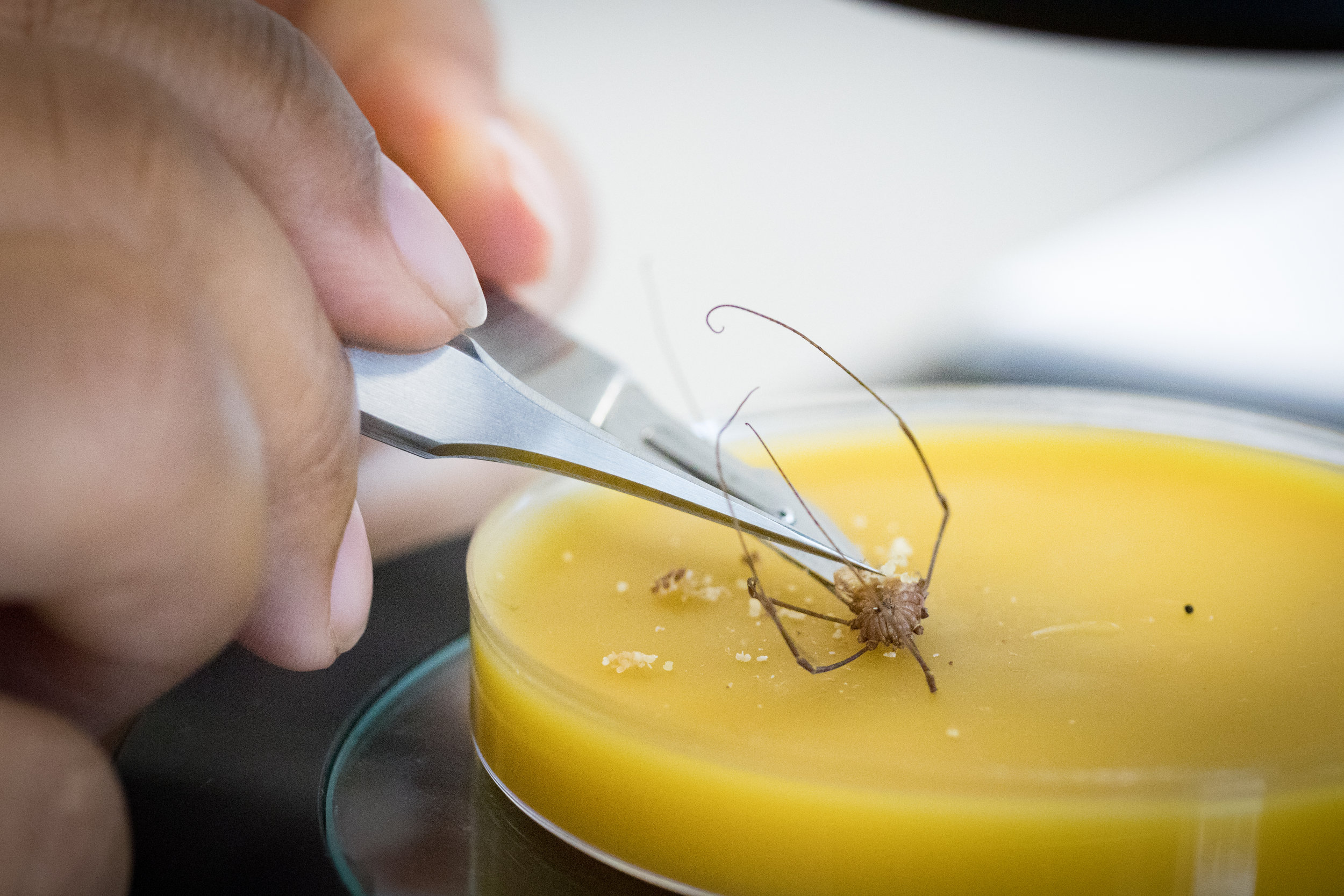Environmental, Physiological, and Social Drivers of Mating Behavior
Opiliones is an Order of arachnid commonly known as harvestmen, or daddy longlegs. Although harvestmen and spiders are both arachnids, the two orders are not otherwise closely related.
Leiobunine harvestmen of North America exhibit high diversity in mating behavior across even closely related species. In some species, mating interactions involve long, aggressive struggles between the male and female. In other species, mating involves a quick, cordial exchange. Mating behavior also varies across the mating season, as the opportunity for finding mates dwindles, and across morphological traits, which can determine mating outcomes. Even physical conditions (e.g. water deprivation and parasite load) can affect mating behavior and success.
In this study, we explore this incredible diversity in harvestmen sexual behavior using a combination of field work and laboratory experimentation to determine the role of abiotic, biotic, and social conditions in mating behavior variation within a phylogenetic context. We are working on this project in collaboration with the Boyer Lab at Macalester college.
Behavior is compared across species, as well as across geographically separated populations of a single species, in order to better understand the determinants and dynamics of mating behavior.
Documenting Mating Behavior
To collect data, we spend hours upon hours watching individuals mate (or try to mate) in the lab and in the field. We take detailed notes of posture, duration, grappling styles, and success rates. See some of our video footage here, or read more about our work in Vice magazine.
Leiobunum calcar mating
Leiobunum politum mating
Underside of Leiobunum alrichi mating pair
Leiobunum vittatum in a mating embrace
Physiological drivers of behavior
We study how morphology and body condition influence mating behavior
We explore how body size and other physical traits—including egg and parasite load in females and weapon size in males—influence the outcome of mating encounters. We also explore how environmental conditions, such water availability, influences mating dynamics in these animals, which are incredibly water limited.
Explore more projects
Too Hot to sing
Temperature variation and mating behavior in treehoppers
Global warming poses unknown challenges to the abilities of animals to attract and find suitable mates. In this study, we use Enchenopa binotata treehoppers--captured across a latitudinal gradient--to better understand the plasticity of male signals and female preferences in response to temperature changes, as well as their potential consequences for reproduction.
predators attack!
The physiological and behavioral ways that arthropods detect and escape predators
Attracting mates and finding food can be risky when predators are around. In this study, we explore 1) the types of "sensory cues" (e.g. sight, sound, or chemicals) that prey use to detect predation threats; 2) how individuals change their behavior when a predator is around to avoid detection; and 3) the behavioral, physiological, and physical tactics that individuals use to escape an attack.
sound art
Experience Life as an Insect in the Leaves
The Sound Art project began with a fortuitous meeting between Kasey Fowler-Finn and world-renowned sound artist Stephen Vitiello. In 2015, Kasey and Stephen developed an immersive audio exhibit that brought visitors into the depths of plant-borne sound. Today, Kasey and Stephen are developing their next exhibit, which will demonstrate how global warming may influence communication in vibrational insects.















